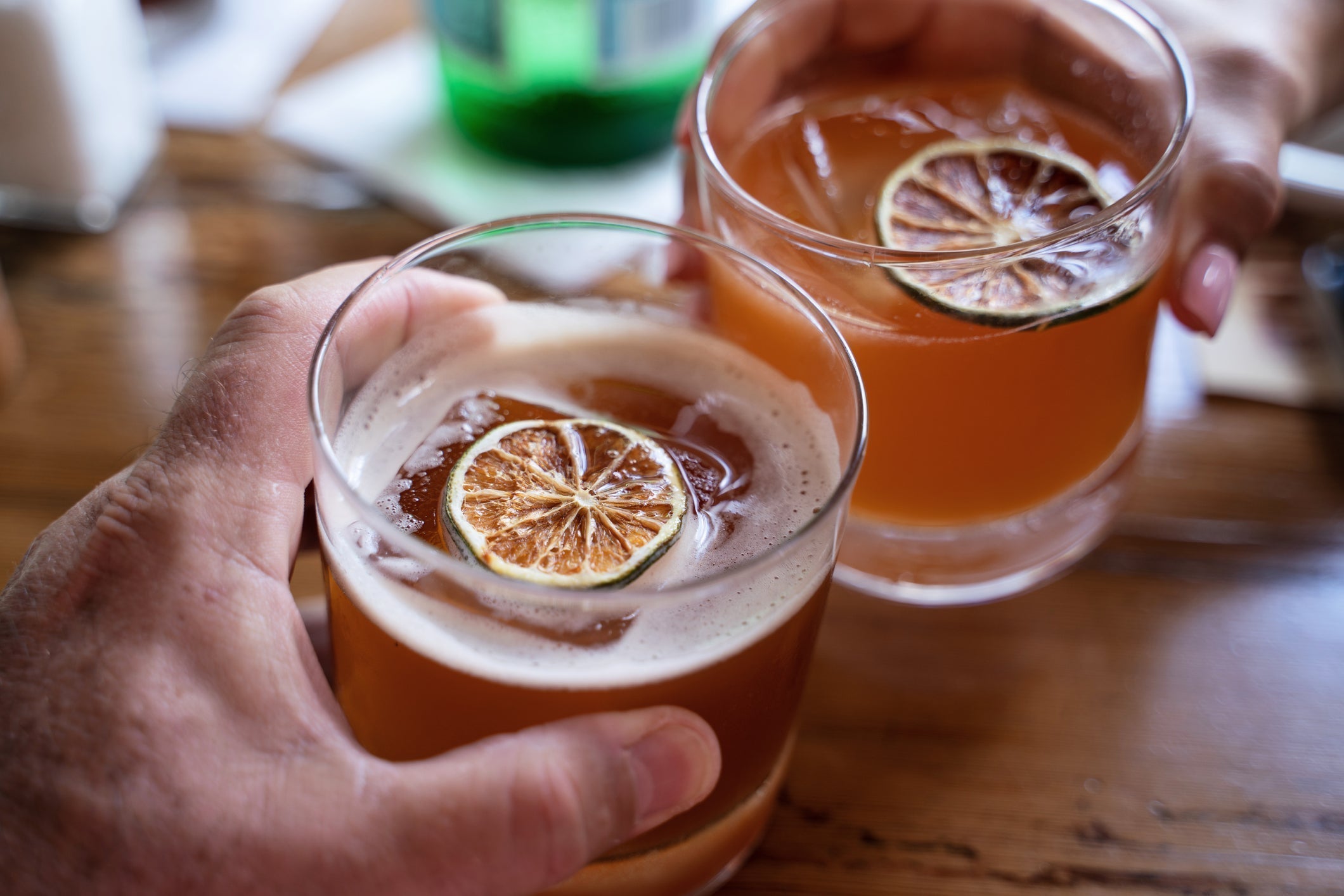Mezcal: What It Is, What It Tastes Like, and What It’s Made From
- by ShopSK 1
-


Mezcal: A Brief Lesson in Its History
Mezcal is a distilled spirit made from agave plants and has been around for many centuries. It has been slow to become a household name within the U.S. compared to its more infamous cousin, tequila, but it's been making its rounds.
Like tequila, mezcal is derived from the agave plant, but it's not the blue agave that produces tequila. Rather, mezcal is made from maguey, a distant cousin in the agave family.
It's this seemingly small distinction that makes a world of difference and gives mezcal the unique flavor profile that sets it apart from other spirits.
It's commonly believed that the indigenous people of Mexico first created mezcal. The Aztecs and Mayans used mezcal as a religious offering and as a means of communication with their gods.
Mezcal was also believed to have healing properties and was used for medicinal purposes.
It was in the early 1500s, when the Spaniards began to colonize the country, that they were first introduced to mezcal by the indigenous people. Mezcal was apparently extremely popular among the colonists because they began to produce their own from maguey and eventually exported it to Europe.
For whatever reason, until the early 2000s, mezcal remained relatively unknown outside of Mexico. However, since then, the distilled spirit has been on a meteoric rise thanks to popular brands like El Mezcalito Gold Mezcal 750ml, to help make it one of the most popular spirits in the world.
What Is Mezcal Made From and How Is It Made?
As mentioned earlier, mezcal is derived from the agave plant like tequila. However, instead of the blue agave, mezcal is made from the maguey plant.
Maguey is a plant native to Mexico and can be found in varying regions around the country. Mezcal is made by harvesting maguey plants and cooking them in a traditional oven.
Once the maguey plants are cooked, they are then crushed and distilled to create delicious mezcal. A fine quality of mezcal is that it can be made from different types of maguey plants resulting in a truly unique flavor profile.
Some maguey plants that are used to make mezcal include:
- Coyote
- Espadin
- Tobasiche
- Tepeztate
Once the maguey plants are distilled, you'll end up with mezcal that's typically clear or pale in color. However, you can also find some mezcals that are aged in barrels to give them a brown or amber-like hue.
What Does Mezcal Taste Like?
There are many different flavors of mezcal, which makes it unique and sets it apart from other spirits. Some of the best mezcal available features a smokey, earthy and sweet flavor profile. Some bottles, like the Ilegal Añejo Mezcal 750ml, feature gorgeous flavors that rival the world's finest scotches and cognacs.
However, depending on your taste, you may find the best mezcal to be ones like the Clase Azul Guerrero Mezcal 750ml, which features a fruity, floral and spicy flavor profile.
The flavors of mezcal ultimately depend on the type of maguey plant used to make it. If you want the true full mezcal experience, consider drinking it neat or on the rocks. If cocktails are more your speed, consider using the spirit in a Paloma or Margarita for a truly delicious drink.
It also pays to keep in mind that because there are up to 150 species of agave used to make mezcal, each type may influence your mood differently. Each type of mezcal is said to have a different energy, giving it a mystical quality.
Mezcal: The New Old Fine Wine?
In many ways, mezcal is like fine wine, and you may have even heard the term terroir used when describing the spirit. The term terroir is described as how a region's climate, terrain and soils affect the taste of the wine, or in this case, the mezcal.
Oaxaca, where the maguey plant grows, is well-known for its rich soil and mineral-forward water. It's also where Xicaru Silver Mezcal 750ml is produced using the native Espadin agave plant.
This is important because it's this local mineral-rich water that's used in the fermentation step of the distillation process.
Additionally, like fine wine, mezcal can only be made at certain times due to how the climate affects the fermentation times. Depending on the region, certain producers only make mezcal during the warmer months.
There's something about keeping up with centuries-old traditions that take food and drinks to the next level that's impossible to recreate with modern technology.
Fortunately, high-quality mezcal like Quiereme Mucho Espadin Mezcal 375ml uses traditional methods based on where they're distilled. For example, you'll find distilleries in Ejutla using refrescadera stills, while those in Santa Catarina Minas use clay pots.
Like wine, variations of the maguey plant have different names, such as Espadin, Largo, Cirial and Barril, to name a few. And just like wine, mezcal is something to be sipped rather than thrown back in a shot glass.
However, unlike Merlot and Pinot Noir grapes that are harvested annually, many producers must wait several decades for their maguey plants to reach full maturity. This is another reason why mezcal can still be considered a craft spirit and a reason you can expect to pay a high price for a bottle of mezcal.
Like a fine wine, you'll find small-batch mezcal like El Silencio Espadin Mezcal 750ml, to be much more expensive but well worth every penny compared to mass-produced variations.
How Much Is Mezcal?
The cost of mezcal will vary and typically ranges between $45-$1,000 online or in a local liquor store. The price of mezcal considers the type of maguey plant used to make it, as well as the age of the mezcal itself.
Because mezcal is like fine wine, you should expect to pay much more for it than you would for a bottle of tequila. Click here to see our Mezcal collection
What's the Difference Between Tequila and Mezcal?
To be frank, it's highly likely that you've already tried mezcal, even if you didn't realize it. In short, tequila is mezcal, but mezcal is not tequila.
Plant Type
This is because mezcal and tequila are both derived from agave plants, but mezcal is made from maguey, while tequila is made from blue agave.
As mentioned earlier, the various maguey plants used give mezcal a unique flavor profile that sets it apart from other spirits.
Tequila is widely recognized as a traditional flavor and often has hints of vanilla or even caramel. However, you may also discover that some mezcal like Xicaru Mezcal Reposado 750ml feature notes of vanilla on top of the commonly associated smokiness.
Tequila can only be made from one agave but can be made from eleven variations of the blue agave. On the other hand, mezcal, especially the ones with a smokier flavor profile, can be made from one of 150 agave species in Mexico.
Before its rise in popularity, mezcal used to be a kind of party trick for people to get drunk and build up the courage to eat the worm in the bottle. However, the smokey notes have finally garnered the interest of cocktail enthusiasts, and the spirit found its way into bars across the U.S.
Distillation Method
Both mezcal and tequila are distilled using the piña, or the core of the agave plant. This is about as close as you'll get in terms of similarities between the two spirits.
Mezcal production, depending on the local tradition, will typically start by cooking the piña inside pits filled with charcoal and wood and lined with lava rocks. After cooking, it's then distilled in clay pots.
Although many mezcal producers follow traditional distillation methods, some commercial-size producers have taken to more modern methods.
However, if you're looking for the genuine smokey flavor associated with mezcal, be sure to get a bottle from artisanal producers instead. That's because it's the traditional distillation method that gives bottles like Xicaru Mezcal Anejo 750ml its famous smokiness.
Tequila, on the other hand, is typically produced by steaming the piña in massive industrial ovens before distilling it several times in copper pots.
Check the Label
You'll find that mezcal generally has a pale or amber color depending on how long it's been aged inside oak barrels.
Check the label to see how long the bottle of mezcal was aged. It could be as little as one month and go up to four years. However, you can also find mezcal that's been aged inside oak barrels for up to twelve years.
Unaged mezcal or mezcal, like the Casamigos Joven Mezcal 750ml or Mezcal Gusano Rojo 750ml, that skipped the aging process or has been aged up to a maximum of two months, is called joven, or young. Mezcal aged between two and twelve months, like Clase Azul Durango Mezcal 750ml, is called reposado, and mezcal aged beyond one year is labeled as anejo.
Tequila is labeled similarly to mezcal, with the only difference being the label for the shortest aged bottle. Tequila directly bottled or aged up to two months is called Blanco, silver, or Plato.
Tequila aged between two and twelve months is called reposado, and tequila aged between one and three years is called Anejo.
Level Up With Mezcal
The best way to describe mezcal is delicious. It's smoky and gives hints of bell pepper, chipotle, and even leather. However, you can also find bottles that have a floral, spicy, and fruity flavor profile if that's your preferred taste.
The best way to find your favorite bottle of mezcal is through trial and error! Like a fine wine, take notes of the maguey plant used for each bottle until finding the perfect one.
Learn further about the variations in tequila.
Looking for alcohol delivery near you in Los Angeles and Orange County?
Look no further than ShopSK! With a wide selection of wine and spirit delivery options available, we offer fast and reliable delivery in less than 2 hours.

